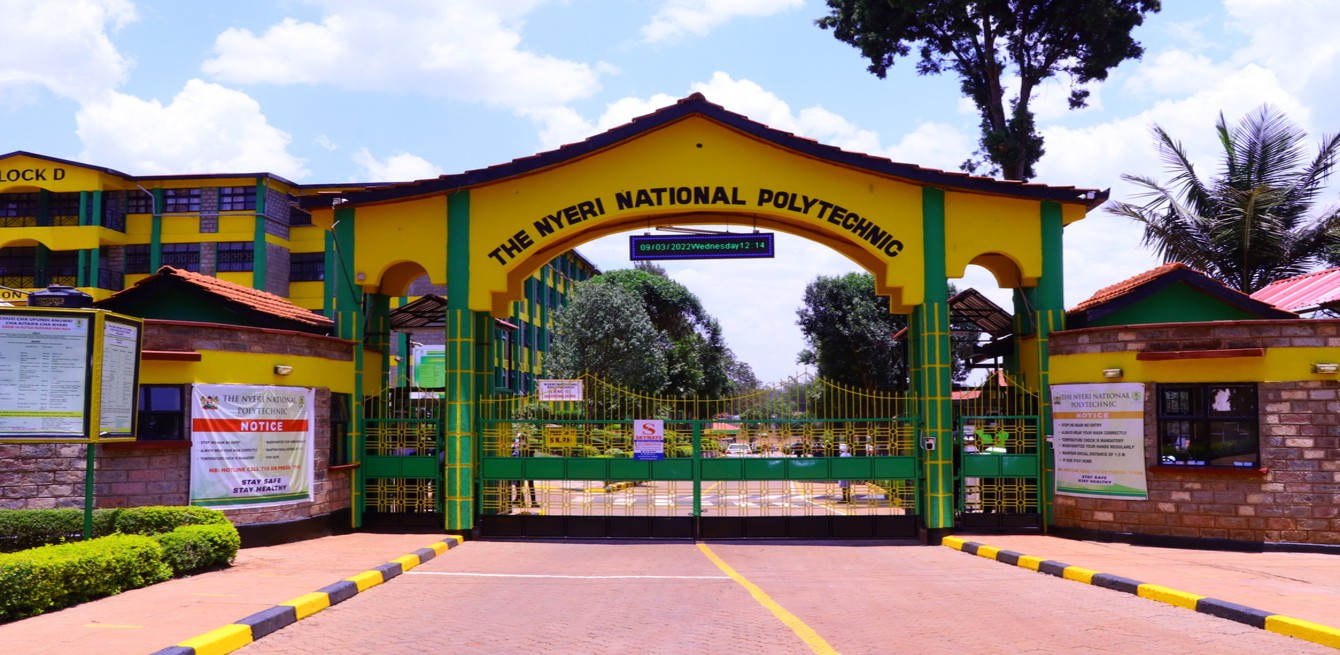
Nyeri National Polytechnic Adopts AI System to Revolutionize Exam Setting and Cut Costs
For Alias Gitau, the Examinations Registrar at Nyeri National Polytechnic, exam season used to be one of the most exhausting periods of the academic calendar. Together with his team, he was responsible for ensuring that more than 8,400 assessment tools prepared each academic year met the highest standards—a task that demanded long hours and meticulous attention to detail.
For years, the assessment process at the polytechnic, including the creation of Continuous Assessment Tests (CATs) and End of Term Examinations, was largely manual. Aside from basic digital typesetting and printing, everything else—from planning to validation—was done by hand.
“The process would start with Heads of Departments submitting course planners detailing units per course. Our office would then schedule exams, set up expert panels, and organize sessions for assessment tool development and validation,” Gitau explains.
This tedious cycle took a major leap forward four months ago when the institution partnered with a local developer to create an AI-powered assessment generation system, aptly named AGEX.
How AGEX Works
Unlike typical AI systems that scour the internet for information, AGEX is designed to work within a controlled knowledge base. It draws on data such as the course units, curriculum guides, occupational standards from the Kenya National Qualifications Authority (KNQA), and internal learning materials. This ensures all generated assessments are aligned with the official curriculum.
“The idea is to prevent the system from generating anything outside its scope,” says Gitau.
AGEX uses prompts and configurations to determine whether it’s generating a CAT or a summative exam. These configurations specify key exam parameters, including duration, number of questions per section, marks distribution, and even the complexity of verbs based on the learners’ level of study.
“For instance, when generating a Diploma-level assessment, AGEX avoids simple verbs like ‘list’ and opts for more advanced ones such as ‘elaborate’ or ‘analyze’,” Gitau explains.
The system not only generates exams but also creates corresponding marking schemes. Once approved, soft copies are sent to the printer for physical distribution. Although final moderation remains a manual process, the AI significantly reduces the amount of rework.
“In the past, if an assessment was rejected, we had to start from scratch. With AGEX, we simply adjust the query and regenerate a high-quality version,” says Gitau.
Impact and Future Plans
Gitau, alongside colleagues Kelly Buruku and Daniel Mwanzia, has been training AGEX for the past three months. The results have been impressive—not only in terms of time saved but also in the quality and accuracy of the assessments.
Beyond assessment creation, the polytechnic plans to expand AGEX’s functionality to automate exam scheduling and generate performance analytics to inform institutional policy.
“The system can produce detailed reports on student performance, enrollment, and completion rates—reports that previously took days to compile,” Gitau notes.
Cost Savings: From Millions to Mere Thousands
For Dr. David Mwangi, Principal of Nyeri National Polytechnic, the most significant advantage of AGEX is cost efficiency.
“Previously, we spent KSh 7 million per term to produce 2,800 assessment tools, paying KSh 2,500 for each. That’s KSh 21 million annually,” Dr. Mwangi explains.
With AGEX, the polytechnic projects a dramatic reduction in expenses, estimating a new annual cost of less than KSh 2 million.
“With a simple command, AGEX can do what previously took weeks and millions of shillings. This is a major win for both efficiency and sustainability,” he added.
Nyeri National Polytechnic’s bold move into AI-driven assessment is a shining example of how education institutions can harness technology not only to boost efficiency and improve learning outcomes, but also to make smarter use of limited financial resources.
